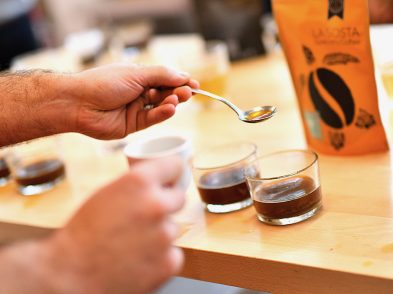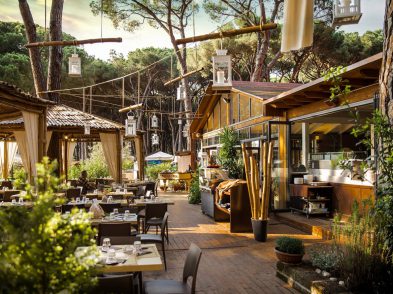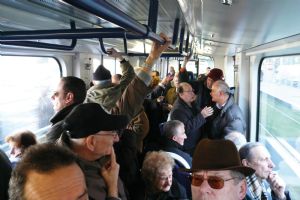Villa
Bardini’s recently restored museum complex is quickly gaining a reputation as a
first-rate center for art and culture. The opening of its newest portion
signals a shift in the city’s traditional static attitude towards contemporary
culture. Along with the re-opened Strozzina and the new exhibits at the Marino
Marini museum, the Bardini is now another piece in the city’s cultural mosaic.
Actually, it is two new pieces: the Bardini Contemporanea museum and the
café/restaurant Terrazza Bardini.
The project has all of the elements for success: solid financing, a
well- launched program carried out with enthusiasm, a good curator and an
enlightened restaurant proprietor-respectively, the Ente Cassa di Risparmio di
Firenze, Osservatorio per le arti contemporanee coordinated by Carlo Sisi,
Alberto Salvadori Restaurant and proprietor Umberto Montano, well known for his
two other culinary jewels, Alle Murate and Osteria al Caffè Italiano. All of
this against the backdrop of the incomparable panorama overlooking Florence from the
grounds of Villa Bardini.
The first part of Bardini Contemporanea is a corridor spaced out over
three consecutive rooms following from the ticket office to the restaurant. The
space descends parallel to Costa San Giorgio, and its small, high windows
create a sort of tube that lends itself to various sensorial suggestions. The second
part of the museum is housed inside the restaurant-the two walls facing the
wide French doors leading to the terrace boast works splashed in shadow-less
light and shaded in grey by the surrounding draperies and walls. The end
product is very elegant, even though the tables in front of the first wall do
detract slightly from the overall effect.
Luis Molina-Pantin, a Venezuelan artist chosen for the inaugural
exhibit, employes three landscape themes in his photographs. The visitor’s gaze
stops on a series called Narco-Architecture and its contribution to the
community of Falls-Bogotá (2004-2005) where the artist concentrates on cultural
phenomenon connected to architecture-essentially how the obscene aesthetic
taste of Colombian drug lords, thanks to thoughtless wealth combined with arrogance
and ignorance, have created a new landscape made of an indigestible mix of
local style with Eastern and Western models.
In contrast, Pantin’s Chelsea Galleries series
(2001-2006) shows a private landscape, the offices of the influential galleries
of the famous New York neighborhood.
Monumental shelves erected in the name of cataloguing and corporate control of
the art market demonstrate the disappearance of the singular work of art,
leaving the field open for a new system worthy of a multinational company. New
Landscapes (1999-2000) is a series of still-lifes composed of everyday objects
made evocative by the landscape images represented on them. Pantin allows us to
meet the contemporary artist, using classic themes such as landscapes and
portraits, to convey a personal, ironic and estranged perception of memory,
souvenirs that persist across possessions and the vision of an object.
During the inaugural press conference, Florence’s museums
superintendent, Cristina Acidini, reminded the audience that everything is
connected to the aesthetic. In a place like Villa Bardini, it is easy to
understand how the landscape reveals the story of the continuous work of man:
our attempt to tame nature (and thus, ourselves); our urge to give the
landscape significance as representative of culture.
In the same way, she noted, food is shaped by culture, offering infinite
possibilities for different presentations and creations. Thus the restaurant’s
proprietor, Montano, intends for the food to be an active player in the
exhibition space ‘contained’ in the restaurant, offering an array of aesthetic
experiences-not only good but beautiful. As with art, it is important, says
Montano, to find the significance in sharing; he is inspired by the joy of
offering food to others.
By its nature, contemporary art is done with faith in the
uncertain-often finding a home in spaces not dedicated specifically to it, but
where it is nonetheless able to express itself (even if impetuously). Villa
Bardini decided to bring the contemporary experience to life-now it is up to us
to take part in it.







